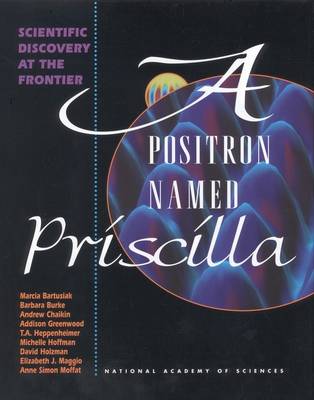A Positron Named Priscilla is a book of wonder, offering a fascinating, readable overview of cutting-edge investigations by many of today's leading young scientists. Written for anyone who loves science, this volume reports on some of the most exciting recent discoveries and advances in fields from astronomy to molecular biology.
This new book is from one of the world's most prestigious scientific institutions, the National Academy of Sciences. The Academy provides an annual forum for the brightest young investigators to exchange ideas across disciplines—an exchange that was the spark for A Positron Named Priscilla.
Each chapter is authored by a popular science writer who offers helpful historical perspectives, clear and well-illustrated explanations of current scientific thinking, and previews of future developments. The scope of topics and breadth of discussion ensure interest at all levels. Topics include:
- Planetary science and the compelling glimpse through the clouded atmosphere of Venus afforded by the spacecraft Magellan.
- Astrophysics and the emergence of helioseismology, a new field that allows researchers to probe the interior workings of the sun.
- Biology and what we have learned about DNA in the 40 years since its discovery; our current understanding of protein molecules, the "building blocks" of living systems; and the high-tech search for answers to the AIDS epidemic.
- Physics and our new-found ability to move and manipulate individual atoms on a surface. The book also tells the remarkable story of "buckyballs," or buckminsterfullerenes, a form of carbon discovered only a few years ago, that have the potential to be used in a variety of important applications, from superconductivity to nanotechnology.
- Mathematics and the rise of "wavelet" theory, and how mathematicians are applying it in sometimes startling ways, from assisting the FBI with fingerprint storage to coaxing the secrets from a battered recording of Brahms playing the piano.
- Geosciences and the search for "clocks in the earth" to make life-saving earthquake predictions.
A Positron Named Priscilla is a "must" read for anyone who wants to keep up with a broad range of scientific endeavor.
Table of Contents
- Front Matter
- A Positron Named Priscilla
- 1 Shake, Rattle, and Shine: New Methods of Probing the Sun
- 2 A Positron Named Priscilla: Trapping and Manipulating Atoms
- 3 AIDS: Solving the Molecular Puzzle
- 4 Doubling Up: How the Genetic Code Replicates Itself
- 5 Magellan
- 6 Clocks in the Earth? The Science of Earthquake Prediction
- 7 The Mathematical Microscope: Waves, Wavelets, and Beyond
- 8 A Family Affair: The Top Quark and the Higgs Particle
- 9 Bouncing Balls of Carbon: The Discovery and Promise of Fullerences
- 10 Fold, Spindle, and Regulate: How Proteins Work
- Appendix A: Abstracts of Additional Sessions of the Frontiers of Science of Science Symposia
- Appendix B: Symposia Programs
- Appendix C: About the Authors
- Index
- ISBN10 0309048931
- ISBN13 9780309048934
- Publish Date 1 February 1994
- Publish Status Active
- Publish Country US
- Imprint National Academies Press
- Format Hardcover
- Pages 360
- Language English
